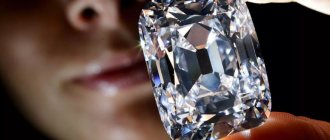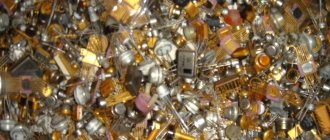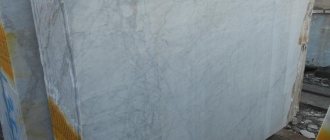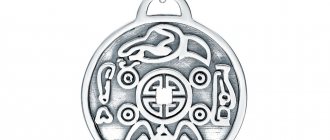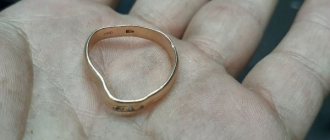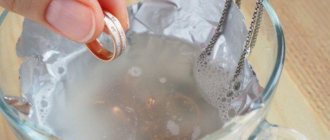WHAT IS A SYNTHETIC DIAMOND
At the end of the 18th century, scientists discovered that diamond is a form of carbon. This marked the beginning of numerous attempts to recreate the gemstone from available materials such as coal or graphite.
How did artificial diamonds come about?
Since the 19th century, many famous physicists and chemists have announced the successful completion of experiments in growing diamonds. True, none of these statements have been documented.
Only in 1927, the Soviet physicist O. Leypunsky made a breakthrough by calculating the conditions necessary for the process. Further research and experiments were carried out in parallel in the USSR, USA and Switzerland.
HPHT and CVD
The first working installation for crystal synthesis was created and patented by the Swede Balthasar Platen. He learned his method from nature.
Platen recreated similar conditions: a cell with nickel, cobalt and iron was heated and pressed with a multi-ton press. In this case, metals acted as a catalyst, and presses simulated pressure of thousands of atmospheres.
This method is called HPHT (High Pressure High Temperature) - high pressure, high temperature. The method is imperfect, but simple and inexpensive. Today it is used for the mass production of industrial diamonds and diamond dust.
In the 60s of the 20th century, a more advanced method was invented: CVD (Chemical vapor deposition) - chemical vapor deposition. The essence of the technology is the crystallization of diamonds from hydrocarbon gas onto a substrate grown by the HPHT method. CVD allows for the creation of larger, purer crystals.
Nano diamonds
In addition to HPHT and CVD, there are other, more narrowly focused technologies:
- detonation synthesis of diamonds - high temperatures and pressures are obtained due to the detonation of graphite. As a result of the decomposition of carbon-containing substances, nanocrystals are formed;
- ultrasonic synthesis of nanodiamonds - allows you to synthesize microcrystals from a suspension of graphite in an organic liquid at normal pressure and room temperature.
Similarities and differences
For a long time, HPHT diamonds and CVD diamonds differed from natural ones in size - under artificial conditions it was impossible to grow a stone larger than a carat. But many companies continue to work to eliminate this shortcoming.
Today, stones with the following characteristics are grown under artificial conditions:
Artificial diamonds have differences from natural ones:
- “artificial” may have metal inclusions left over from production;
- on colored stones you can see growth sectors that appear due to accelerated crystallization processes;
- Natural and artificial crystals luminesce differently in UV rays.
These differences can only be seen with specialized equipment. Therefore, suppliers and sellers of artificial diamonds are required to indicate on the product tags information about the origin of the crystals.
Diamond production technologies
More than a thousand enterprises produce artificial stones. They use three technologies:
- Combination of high temperature and pressure. This technology is called HPHT. Thanks to incredibly heavy presses, excess pressure of up to 5 GPa is created, which, in combination with a temperature of about 1500 degrees, leads to the appearance of diamond. It is under such conditions that graphite turns into diamond. In this case, a small pebble is often obtained - a seed.
- Carbon deposition in a special gas mixture. This method is called CVD. To do this, it is necessary to create a plasma consisting of atomic carbon, which is deposited (condensed) on the surface, and this is how the diamond grows. With its help, small crystals obtained using HPHT technology are transformed into larger stones.
- In some cases, the impact force of an explosion is used. Pressure and temperature cause the formation of very fine crystals, which are used as an abrasive powder. The explosive contains carbon (graphite) and is placed in a metal container (tube) and detonated.
Growing diamonds in the laboratory
By combining the first two technologies, it is even possible to grow entire watch plates or glasses. But these are all technical diamonds. Jewelry analogues of the precious stone are not produced en masse, since the technology is so expensive that it is easier to extract future diamonds from underground.
It is impossible to make a diamond from graphite at home, especially a large one. Because this requires not only a lot of time, but also a temperature of about 1400-1600 degrees and a pressure of more than 100 thousand atmospheres. Some desperate craftsmen are trying to explode graphite in a sealed metal tube using TNT. These are too dangerous experiments, especially since large stones are not formed.
The second home method requires graphite (pencil lead), wire and current, as well as water or liquid nitrogen. The point of the experiment is that a stylus is connected to a wire, frozen with nitrogen or water (ice) and an electric current is passed through it. This should turn graphite into diamond.
WHERE SYNTHETIC DIAMONDS ARE USED
High tech
The main areas of application of artificial diamonds are industry and high technology:
- cutting tool - artificial diamonds are one of the hardest substances;
- thermal conductors - the combination of high thermal conductivity and minimal electrical conductivity makes artificial stone indispensable as a heat sink for high-power lasers and transistors;
- optics - natural diamonds are not suitable for these purposes, as they have too many defects;
Jewelry industry
The technological breakthrough has raised the question of the need for jewelry and diamond mining companies to control the flow of artificial stones into the jewelry market. Now the growth of their sales is limited legally. In addition to this, some companies are opening their own production of artificial jewelry diamonds.
That's exactly what De Beers did. The diamond mining corporation refused to engage in diamond production for a long time. However, in 2022, she created a subsidiary, Lightbox Jewelry, which began selling artificial stones under its own brand.
What is made from graphite?
Graphite is used for the manufacture of refractory materials, electrical machines and installations, in the chemical, mining and manufacturing industries. It is also used to make pencil leads, paints, coatings and batteries.
Interesting materials:
How to breed a dragon in Minecraft? How to block pop-up ads on Android? How to thicken glue without sodium tetraborate? How to block access to a site through a browser? How to register electronically for traffic police? What was the name of Judas in The Master and Margarita? What music is popular among young people now? What types of brown-haired women are there? What are the extra points for the exam? What mushrooms are salted raw?
Is it possible to get diamond from coal?
It is quite possible to grow a diamond at home from coal. For this you will need:
- heat-resistant flask or glass for 2–3 liters;
- smaller flask;
- pestle and mortar;
- charcoal, store bought;
- seed in the form of a natural diamond crystal;
- paper filters.
A microscope is useful to monitor the process, but even without it the gem will grow. Growing stages:
- Grinding charcoal in a mortar and pestle. Small pieces measuring 3–5 mm will do.
- The resulting mass is poured into a heat-resistant container and filled with distilled water so that it is completely hidden. You cannot fill the container completely - the liquid will run away when heated.
- The container is placed on very low heat. As it boils, water is added. This stage can take from several hours to several days.
- The resulting yellow, carbon-rich solution is passed through paper filters, poured into a small test tube, and evaporated again. This is repeated 3-4 times. The color of the liquid becomes deep yellow.
- After 2-3 days, a small test tube with the resulting solution is placed in a warm place. A small diamond crystal is lowered into it, on which the growth of carbon lattices begins. When evaporating, you need to add a new solution - the future diamond should not come into contact with air.
The process is very slow - 0.01 carats increase per year. Therefore, the larger the seed crystal, the faster the growth will occur.
In addition to the topic, how the process of making a diamond from glass occurs:
Making a diamond with your own hands and without significant costs is real. The resulting stones can be used to create decor and interior decoration. The main thing you need when growing a gem is patience.
Beautiful death: new technology for obtaining jewelry
In 1999, scientists learned to obtain diamond from the ashes of a person or animal. After 3 years, the technology received wide publicity and the creation of diamonds from remains turned into a profitable business. The technique does not stand still. Previously, to produce the stone, all the ashes from cremation were required, but today a lock of hair is enough.
When a person is cremated, very high temperatures are required. Thanks to this, it became possible to preserve loved ones in jewelry. But the price for such a burial is not small: $5,000-22,000.
Attention! The prices indicated on the website are not a public offer, and the administration is not responsible for them.
You can receive a stone from the ashes of your loved ones in 12-14 weeks, depending on the complexity of the order. The size of such diamonds ranges from 0.25 to 2 carats. Price varies depending on color and size. To create one carat of yellow diamond, you will need 100 g of ashes or 35-40 g of hair and $6,250. To grow a blue mineral, 500 g of ash or 100 g of hair are spent. Its price starts at $11,750 per carat.
Features of Paper Gems
Paper gemstones have precise edges and shapes that are almost completely identical to the real thing. Of the entire group, the most beautiful and original is the diamond. There are many ways to make a diamond out of paper. In this case, various techniques can be used - ready-made templates, origami, appliqué.
Examples of paper crafts: beautiful diamonds
A diamond made from paper or cardboard can be an excellent decorative addition to many crafts. Volumetric paper diamonds look especially beautiful. Here are some examples of crafts with different edge shapes:
- This form of “precious stones” is relevant if you need to make a vertical garland to decorate a room or photo zone.
- A natural-shaped diamond after a jewelry cut, formed from colored cardboard, can be used as decorations and theatrical props.
- Several options for the shapes of paper stones that can imitate a diamond with different cuts. From such figures you can create horizontal garlands for room decoration or a New Year tree.
Each presented craft differs in its shape and manufacturing principle. You can think of a lot of areas of application for such products. Additionally, the manufacturing principle itself can appeal to any child, developing his spatial thinking and imagination.
Graphite and diamond
Graphite is a native mineral, one of the allotropic forms of carbon. Each of its atoms is covalently bonded to three surrounding atoms. In nature, it is formed at high temperatures in volcanic and igneous rocks. It is mined together with pyrites, garnets, and spinel. Found in quartz veins, metamorphic rocks, and coal mines.
Diamond is also one of the allotropes of carbon. However, due to differences in the crystal lattice, it has completely different properties. The carbon atoms are in a state of SP3 hybridization, each atom is located in the center of a tetrahedron formed by the surrounding atoms. This structure explains the high hardness of the element.
There is no exact version of the origin of diamonds yet. Scientists put forward different versions of the formation of the hardest mineral - magmatic, meteorite, mantle. Diamonds are often formed when meteorites collide with the earth's crust. They are also found in associations with ultra-high blood pressure.
The table shows the comparative physical and chemical characteristics of diamond and graphite:
| Characteristic | Graphite | Diamond |
| Mohs hardness | 1 is one of the softest materials. | 10 is the standard of highest hardness. |
| Density | 2.08-2.23 g/m³ | 3.47-3.55 g/m³ |
| Thermal conductivity | 100-354.1 W/m*K | 900-2300 W/m*K, the highest value among all solids |
| Melting temperature | 300-3000 K | 1000-1200 K |
| Transparency | Opaque | Transparent |
| Stroke color | Black | Absent |
| Shine | Metallic | Diamond |
| singonia | Hexagonal | Cubic |
Diamond has a high refractive index. Thanks to this property, as well as its transparency and dispersion, the crystal creates a unique play of light, which makes it the most expensive gemstone in the world. Usually it is completely transparent, but in nature there are yellow, blue and even black crystals, which is explained by the presence of impurities.
Color range of laboratory stones
Many people are interested in what shades lab-grown diamonds take. Today, scientists are able to “paint” synthetic pebbles in two colors: yellow and blue. But colorless diamonds are the most popular, although their creation requires more time and effort.
It is difficult to obtain transparent artificial diamonds because it is necessary to constantly ensure that the composition does not contain boron or nitrogen. Stones created with such efforts are treated with the most reverence and even small-sized samples of 1 carat are valued.
Blue synthetic diamonds are produced by adding bromine to carbon. Their shades vary: from deep blue to pale blue. Nitrogen is used to produce yellow diamonds. Then the color ranges from acidic lemon to fiery orange. To obtain black stones in the laboratory, nickel is needed.
Laboratory crystals: fake or full replacement
Calling synthetic diamonds a copy is incorrect. Rather, it is the same mineral produced in different ways. It's worth noting that the only differences between them is the way they appear. In one case, stones are born in nature, in the other, people have a hand in their creation.
An artificial stone produced in a laboratory acquires all the properties of a “real” stone:
- strength;
- structure;
- shine;
- refractive index;
- specific gravity;
- thermal conductivity;
- resistance.
But there is one difference between artificial diamonds - the complete absence of defects. This makes them an ideal material for industrial and jewelry purposes.
It is curious that only 20% of diamonds mined in nature can be used to create jewelry. Other stones have microcracks, inclusions and clouding. When using high-quality technologies, it is difficult to distinguish a natural mineral from an artificial one, even with laboratory equipment.
How did synthetic diamonds originate?
The first fakes of precious stones were generally made of glass. Synthetic diamonds are not so expensive, so sometimes they were specially inserted into jewelry so that at special events, in case of theft, there would be no tragedy.
Attempts to make artificial stones were actively carried out back in the 19th century, but they were unsuccessful. In the first half of the 20th century, scientists were able to determine the conditions necessary for the formation of diamonds. In 1953, the first artificial stone was born, and since 1956, thanks to General Electric, the production of artificial diamonds has reached an industrial scale. The demand for them was constantly growing, since the incredibly hard mineral was used for cutting tools (cutters, glass cutters, drills). More than 80% of all synthetic diamonds are now produced in China. Basically, they produce very small crystals or even dust to use for grinding.
Growing diamond with methane
This method requires special equipment. In a special chamber, instead of air, a methane environment is created. Diamonds are obtained in cubic shape. To a greater extent, these are industrial diamonds; only occasionally they are placed in jewelry. The advantage of methane technology is that it does not require the creation of ultra-high pressure. Due to this, synthesis occurs faster and cheaper. In addition, the technology makes it possible to obtain very large stones - more than 30 carats.
Precious stones have always attracted attention and were highly valued. But nowadays, artificial stones are increasingly being grown, which are not inferior in beauty and properties to natural minerals. It is better to start home experiments by growing crystals from ordinary table salt; it is exciting, beautiful and safe.
How to grow diamonds at home
The cultivation of “analogs” of diamonds can be organized using sugar or salt available in any kitchen. To start the experiment you will need:
- distilled or boiled clean water;
- salt;
- thread or fishing line;
- pencil.
The process consists of the following steps:
- To create a supersaturated solution: gradually add salt to water at room temperature and stir until the grains stop dissolving.
- Wind the thread around the pencil so that its end does not reach the bottom of the container. Dip the thread into the liquid.
- After a few days, the thread will be covered with crystals. You need to select the largest sample, attach it to a new thread and lower it into a filtered solution.
- Gradually the “diamond” will increase. If water stops covering the diamond, you need to make a supersaturated solution and add it to the container with the sample.
If you add food coloring to the solution, you can grow multi-colored crystals. Since all the substances used in the experiment do not pose a threat to health, you can grow a diamond from a salt or sugar solution together with your children.
How to get through creative mode using command?
If you don’t want to waste time on any of the above methods, but you are playing in a single player game, then you can use a special command. The complete instructions are as follows:
- Open the chat using the English key “T”;
- Enter the command in the line - “/give @p minecraft:diamond_ore”;
- Press the Enter key.
Moreover, if the command does not fit, then we recommend using a command block (this is a special block that automatically activates the commands written in it). In addition, you can use the “Space” to enter the number of diamonds you want the character to receive. For example, the command might look like this: “/give @p minecraft:diamond_ore 64” (as a result, the character will receive a stack of diamonds).
Home experiment: obtaining crystals from salt
It is impossible to obtain a diamond without laboratory conditions. But, you can grow beautiful salt crystals with your own hands. For the experiment you will need:
- aqueous distillate;
- salt;
- strong thread;
- food coloring (for beauty).
Take a container and fill it with water. Add salt until it stops dissolving. Cut the thread and attach a salt crystal to it. Place the structure in the liquid and wait a few days. If you add food coloring, the “pebbles” will turn out to be different shades.
Salt is not the only material suitable for such chemical transformations. You can use sugar or copper sulfate. Then the crystals “grow” slightly different, but the technique remains the same. Enjoy your experiments.
Features of obtaining resources in client version 1.17
If you're still playing Minecraft 1.17 or earlier, Diamond Ore can be found in every biome between Y-levels 1-15. They appear most often at levels 5-12, so if you want to maximize your chances of finding diamonds, stay between these two levels.
No matter what version of Minecraft you are using, diamonds will spawn in small offshoots of rock that are no more than 9 blocks at a time. One way or another, real diamonds are quite difficult to find.
Alternative names in science and common people
In the scientific world, synthetic diamonds are named after the technology involved in their production. There are HPHT diamonds, which means created under high pressure and temperature. And CDV diamonds stand for chemical vapor deposition. We will tell you about the technologies themselves further.
But artificial diamonds are not always its complete copy. There are such types as cubic zirconia, moissanite, rhinestone, ferroelectric, rutile, fabulite and cerussite. Zirconium dioxide is the most common “fake” and has nothing in common with a real diamond.
Ignorant people call an artificial diamond a cubic zirconia, which is a big mistake. Of course, it perfectly imitates diamond due to its strength and refraction. Some experts cannot “by eye” distinguish it from the original stone. Therefore, they are widely used in the jewelry industry.
WHAT ARE ARTIFICIAL DIAMONDS CALLED?
According to the prevailing stereotype, “artificial” is something only externally similar to the original. But imitation does not always mean fake.
Nexus
Since modern grown diamonds are identical to natural ones, marketers propose replacing the established term “artificial diamond” with wording that would reflect the nature of the origin of this stone more accurately:
- "created";
- “grown in a laboratory”;
- “created in a laboratory.”
Artificially grown "diamonds"
There are other types of artificial stones. They are close in structure to diamonds, but are slightly inferior in terms of hardness characteristics and light refractive indices.
- Moissanite. In nature, it forms small colorless crystals with a diamond luster - silicon carbide. But the natural mineral is extremely rare. Therefore, when we talk about moissanite, we usually talk about artificial carbocorundum. The stone is very similar to diamond (its refractive index is even higher: 2.65 - 2.69), and the hardness is only slightly lower (8.5-9.25 on the Mohs scale). Moissanite is also heat sensitive (it changes color when heated above 65°C).
- Nexus. Stone is created by combining carbon with other components. It is almost as strong as diamond.
- cubic zirconia Created by scientists from the Physical Institute of the USSR Academy of Sciences (FIAN), after whom it was named. Cubic zirconias are used to imitate diamonds, with which they can easily be confused due to their similar refractive index (2.15-2.25).
cubic zirconia
When translated into foreign languages, cubic zirconia is often called zircon or zirconium, which is not correct, since zircon is a mineral with different physical characteristics, and zirconium is a chemical element.
Imitation diamonds
Separately, there are crystals that imitate only the appearance of a diamond. They are significantly inferior in strength and do not have a diamond shine (refractive index is less than 1.9).
- Spinel (degussite). Natural spinel is rare and has a crimson color. Therefore, to imitate diamonds, artificial stones are used, which can be given any color.
- Crystal is high quality glass.
- Swarovski rhinestones are small stones with perfectly equal edges and various optical effects.
- White sapphire is an artificial colorless sapphire with high strength.
- Rutile - its refractive index is even higher than that of diamond, however, due to the high effect of birefringence, the back edges of the crystal are clouded.
Spinel
Tips for home experiments
There are many techniques on how to grow a diamond yourself at home. Here are some simple tips on how to make this process more interesting and the result beautiful:
- The crystal can also be grown from sugar or citric acid.
- It is better to take boiled water, it contains fewer impurities and minerals.
- When using rock salt, the solution often turns out grayish, with impurities and particles of dirt. It must be carefully filtered through cotton wool and filter paper. Then the crystal will turn out to be more regular in shape.
- For the seed - the center of crystallization - you need to choose a beautiful and neat crystal of the substance.
- As the solution evaporates, it will have to be added if you want to grow a large crystal. In addition, it is important to ensure that the growing gem does not peek out from under the water. If other stones appear near the main crystal, they should be removed.
- Use food coloring to grow a wide variety of "gems".
- Instead of sodium chloride (table salt), other salts are useful: copper sulfate - for homemade turquoise, alum based on aluminum, potassium, chromium - for lilac stones.
To prevent the liquid from evaporating so quickly, you can cover the glass with a piece of plain paper.
Search Features
Minecraft 1.18 introduced several very important changes that affect the random generation of the Minecraft world. If you're playing Minecraft 1.18 or later, you can go below absolute height and into negative values. Below Y-Tier 0 you'll find all the regular ores, including diamonds, embedded in crushed shale blocks instead of regular stone blocks.
To find diamonds in Minecraft 1.18, you need to go down to level 15 -63, but to maximize your chances of finding diamonds, you should go as deep as possible. Before you reach bedrock, the chance of diamonds spawning increases. This means that the deeper you are, the more likely you are to get diamonds.
Fortunately, the formula for diamond is quite simple: it starts generating at Y=15 and linearly increases in frequency of occurrence as you go deeper. However, the placement of diamonds also depends on the air reduction rate, which was added in the latest version of the client.
This means that if a diamond is placed next to an open air block during world generation, it has a chance of not spawning. This makes it difficult to find diamonds embedded in cave walls. Therefore, you will have to spend some time digging tunnels deep in the crust if you want to maximize your chances of finding diamonds.
To summarize: To find diamonds quickly, go as far down as you can until you reach the bedrock, and then start mining. To find out what Y-level you are on, press F3 to bring up the coordinates menu. The second number next to "XYZ" is the current depth level.
Preparing for sculpting
It is better to do modeling with children at a table with good lighting. The child can sit on his own chair or on the lap of an adult: in the first case, the child has more freedom of action, in the second, learning proceeds faster. There should be enough space on the table for auxiliary materials.
Note!
Plasticine dinosaur: TOP-170 photos of creative DIY modeling solutions. Methods for making a dinosaur + simple master class
- Plasticine machine: simple diagrams and non-standard ideas for crafts made from plasticine. Step-by-step instructions for making a machine with your own hands with photo reviews
- What can be molded from plasticine - a master class on creating crafts from plasticine with your own hands. Creative modeling ideas + photo examples of the best works
Before starting modeling, you can offer your child a specific topic - this will arouse interest. In a playful way, adults can show children how to make animals out of plasticine, for example.
Modeling animals from plasticine will require some additional materials in addition to the plasticine set itself:
- modeling board;
- plastic knife for cutting plasticine;
- blank sheets of paper;
- photos of animals made of plasticine;
- a bowl of water and a hand towel, wet wipes.
If a child is modeling for the first time, then before starting the “Animals from Plasticine” master class, you need to briefly explain and show the properties of plasticine, what you can do with it, give the child to hold pieces of bright material - this will immediately create a desire to sculpt something .
Animals made of plasticine for children who have never sculpted anything before, although exciting, are not the easiest activity. An adult must show what elements can be made: the plasticine needs to be crushed in your hands, rolled into a ball, stretched out like dough, twisted in a spiral, flattened into a pancake, connected several parts of different colors, separated again.
After this, you can show how to wash plasticine off your hands. If this is not done, the plasticine will stick, for example, to paper. Let the child try to do this on his own with a piece of blank paper.
Note!
- How to make slime - the best ways to make slime at home. Simple and quick recipes with a step-by-step master class for children (150 photos)
- Plasticine dog - TOP-180 photos of unusual ideas for creating crafts. Detailed master class on DIY modeling for children
- Clay products: basics of modeling, tips for beginners. Master class on making clay crafts + photo reviews
Where to find slimes
You'll know when you're near a slime as they make a distinctive squelching sound as they jump around. However, actually finding slugs can be quite difficult. To find the slime, you need to go either to the swamp biome or go underground into caves.
When you find slugs, be careful. Large slimes can quickly overwhelm you, as they split into smaller slimes when killed. However, they are worth fighting as the small slugs are harmless and release slime balls when they die.
If you'd rather collect slime molds peacefully, you'll need to collect some pandas. To do this, it won’t hurt to create your own farm of polar bears - pandas.
To breed pandas, you need to feed them bamboo. However, you need to make sure that there are 8 blocks of bamboo within a 5 block radius of the parent pandas before they can enter breeding mode.
Experiments by scientists to create diamonds
Since the discovery of the precious mineral, many have sought to find the secret of its creation. For many centuries, scientific minds have struggled with the solution. Only since the 19th century have physicists and chemists been able to carry out successful experiments in growing diamonds. Although there is no documentary evidence of this. In 1927, the Soviet physicist O. Leypunsky was able to make a breakthrough by identifying the necessary conditions for the process. Many scientists in the USA and Europe have joined similar experiments and are still continuing them.
Several years ago, scientists from North Carolina had a successful experiment. They forced carbon to heat up to 3800°C under a short-term laser beam, then cooled it sharply and obtained the hardest form, called Q-carbon. Almost the same crystal can be obtained at room temperature and normal atmospheric pressure, of course, if you have a laser in use. It was this research that showed that it was possible to obtain a new form of carbon that was stronger than diamond. However, to create it, other requirements must be met:
- enormous pressure;
- temperature 2500°C;
- specialized equipment.
Journey into the past
Let's talk about how many years have passed since the hypothesis appeared that it was possible to obtain synthetic diamonds. For the first time, people started talking about this in 1797, when it was discovered that the stone consists entirely of carbon. But the idea was realized only in 1926, but this cannot be called a complete success. The resulting sample was far from the original, but became the starting point for research.
It was only in 1941 that General Electrics became interested in the technology. Their plan was to heat carbon to 3000 degrees under 5 hPa pressure. But production had to be stopped due to World War II. It was possible to return to research 10 years later.
A high-quality artificial diamond suitable for mass production was obtained only in 1954. But its size was so small that it was impossible to use it in the jewelry industry. Their business expanded into industry. The problem was solved in 1970, but even then the stones did not reach more than 1 carat.
Areas of application and opportunities
About 80% of created diamonds are used in industry and other areas of human life. For example, the production of bearings, tips for drills. Small pebbles can be used to make diamond chips and powder, which are used to coat knives or grinding tools.
Synthetic diamond plays an important role in electronics. They are used to create needles and layers in microcircuits and counters to maintain thermal conductivity and resistance. And this is only an approximate market where high-quality artificial stones can be sold.
For the production of CVD diamonds, the most important role is played by high-tech areas. They are necessary to create mobile phones. They are used to produce laser beams used in medicine: they are used to treat many deadly diseases. Therefore, the role of synthetic stones is enormous.
Diamond mining sites
Countries that have a lot of diamonds are very disparate in their level of economic development, social sphere, religion, and so on. However, they were lucky to be in the very places where diamond mining really makes sense.
Countries where diamonds are mined
- Russia - 40.32 million carats per year
- Congo - 23.20 million carats per year
- Botswana - 20.50 million carats per year
- Australia - 13.96 million carats per year
- Canada - 13.3 million carats per year
- Angola - 8.7 million carats per year
- South Africa - 8.3 million carats per year
Where are diamonds mined in Russia?
- Yakutia
- Arhangelsk region
- Murmansk region
- Karelia
- Perm region
Financial side of the issue
Now let’s estimate how much diamond jewelry made from artificial diamonds will cost. Many people underestimate the importance of these stones, and yet their price is sometimes higher than their natural counterparts. There are several reasons:
- visually they are indistinguishable;
- they have no inclusions, which is called “pure water stone”;
- they are stronger because they do not have cracks;
- their color does not fade;
- they are less whimsical.
The cost of stones depends on their weight, quality of cut and creation method. The most common zirconium dioxide (the most famous name is cubic zirconia) costs only 1.5-6 dollars per carat. But the cost of moissanite ranges from 75 to 155 dollars.
An additional way to find slugs
If you want to find slime quickly, you can use what's called the Slime Chunk Finder. Slime will spawn in certain parts (16x16 areas) of the map, which you can use to create a slime farm.
To easily find a slime chunk, you can use the slime chunk database. This is a free gaming tool that will help you find many things in your world. Just select the current version (for example, Java 1.17) and enter a custom name. The result will be a map of your entire world, filled with all the treasures.
The map may look crowded when you first load it, so remove any unnecessary icons. In this case, only biomes and pieces of slime are displayed. Then use the zoom option to your current location (to do this, find your coordinates in the game) and find the nearest piece of slime.
If it's a swamp biome, wait until evening and you'll see the slugs spawn. Otherwise, you should go underground and look for slugs in the caves. The slime can only reproduce under the Y40 layer, so this will help you narrow your search even further.
Games with rocks: transforming one substance into another
Once scientists discovered the similarities between diamond, coal and graphite, they set out to learn how to transform one substance into another. The first experiments were successful.
It turned out that when a “gem” is heated in a vacuum to 1800 degrees, it completely turns into graphite. The same effect is obtained if an electric current is passed through coal heated to 3500 degrees. Having achieved success with these transformations, scientists set out to make an artificial diamond, and were stuck for almost 100 years.
The experiment on how to make a diamond from coal was crowned with success only in 1880 and took place in 2 stages. First, graphite was obtained by electrolysis. Then, it was placed in a steel flask, closed at both ends and heated red-hot. Sometimes, the vessel could not withstand the pressure and exploded. But, if everything went smoothly, then when the pipe was opened, dark but super-strong crystals were found inside.
How to Find Slime Chunks in Minecraft
When you've got some slime balls (or you're just tired of watching baby pandas produce them), it's time to get crafty. Slime Balls are a very useful item as they can be used in many crafting recipes.
Sticky Pistons are the most interesting item you can make. They are important in many devices and are necessary when creating truly unique designs. A gooey piston can be crafted by placing a slime component on the piston using a crafting table.
If you're feeling magical, you can even make a magma component, an important ingredient for potion making. The magma component can be made by combining slime with flame powder.
A short excursion into the properties of rocks
Until the 17th century, no one suspected the similarities between coal, diamond and graphite. They never coexisted in nature. Moreover, scientists could not imagine the transformation of one substance into another. Everything changed when the English chemist Tennant conducted his experiment and found out their true nature.
Visually, it was not possible to understand this, since the breeds are completely different. Graphite does not have strong bonds and consists of flakes sliding over each other. Its main application is as a lubricant to reduce friction between surfaces. Externally, it looks like molten metal.
The coal composition includes small particles of graphite, but is supplemented with a hydrocarbon compound, oxygen and nitrogen, which gives it a denser rather than liquid-viscous form. Diamonds, in general, have one of the strongest compounds in nature. Externally, these are transparent stones, completely different from their “brothers”.
How to Organize Slime Farms in Minecraft
Slime balls are used to make a lot of important items, so you'll likely run out of them quickly. Luckily, you can make a slime farm that will be practically overflowing with this valuable resource. The instructions indicate the features of organizing such a farm:
- Use the resource database to find the nearest piece of slime.
- Go underground until you reach level Y40 and dig a 16x16 room 20 blocks deep.
- Make several 10x10 platforms in the center of the chamber. Make sure to leave a few blocks of air between the platforms so the slime has room to breed on them.
- Light the platforms with torches or candles to prevent other mobs from spawning.
- Make an iron golem on one of the walls opposite each platform.
The iron golem will make the slime jump over the edge. To make this even better, replace part of the floor with magma blocks. Any slugs that survive the fall will be killed when they jump onto the magma blocks. Leave this area for a while and there should be plenty of slime balls at the bottom of the chamber that you can collect when you return.

